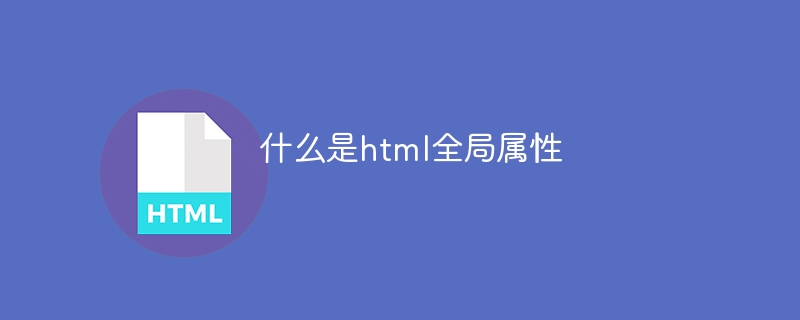
HTML global attributes are a set of attributes that can be applied to HTML elements. These attributes can be used on all HTML elements. Global attributes can be used not only to control the appearance and behavior of an element, but also to provide additional information and functionality of the element. Global attributes can be applied to any HTML element, whether it is a block-level element or an inline element. Whether it's to style an element, provide additional information, or implement interactive functionality, global properties are a very useful tool.

The operating environment of this tutorial: Windows 10 system, Dell G3 computer.
HTML global attributes are a set of attributes that can be applied to HTML elements. These attributes can be used on all HTML elements. Global properties can be used not only to control the appearance and behavior of an element, but also to provide additional information and functionality of the element.
Global attributes can be applied to any HTML element, whether block-level or inline. They are not restricted to a specific element type, so they can be used throughout the document.
The following are some common HTML global attributes:
1. class attribute: used to specify the category of the element. You can use one or more class names, separated by spaces. Class names can be used to style elements or provide them with specific behavior.
2. id attribute: used to specify a unique identifier for the element. The value of the id attribute must be unique throughout the document. You can use the id attribute to locate a specific element or style it in a CSS stylesheet.
3. style attribute: used to specify inline styles for elements. You can use CSS properties and values to define the appearance of an element. Inline styles will take precedence over external and internal style sheets.
4. title attribute: used to provide additional information for the element. The browser will display the value of the title attribute as a tooltip when the mouse hovers over the element.
5. lang attribute: used to specify the language of the element. ISO language codes can be used to define the language of an element to help screen readers and translation tools parse and process text correctly.
6. tabindex attribute: used to specify the position of the element in the tab order. You can use positive integers to define the tab order of elements. By pressing the Tab key, users can navigate to different elements within a form or page.
7. accesskey attribute: used to specify the access key for the element. You can use one character to define the access key of an element. Users can quickly navigate to elements by pressing access keys and browser-specific key combinations.
8. contenteditable attribute: used to specify whether the element is editable. This can be set to "true" or "false" to enable or disable the element's editing capabilities. This is useful for creating editable web content or online editors.
9. draggable attribute: used to specify whether the element can be dragged. This can be set to "true" or "false" to enable or disable the element's drag functionality. This is useful for implementing drag and drop operations.
10. hidden attribute: used to specify whether the element is hidden. It can be set to "true" or "false" to show or hide the element. Hidden elements still exist in the document but do not appear on the page.
These global properties can be used on any HTML element and can be used with other element-specific properties. They provide developers with more flexibility and control to create web pages that meet specific needs. Whether it's to style an element, provide additional information, or implement interactive functionality, global properties are a very useful tool.
The above is the detailed content of What are html global attributes. For more information, please follow other related articles on the PHP Chinese website!